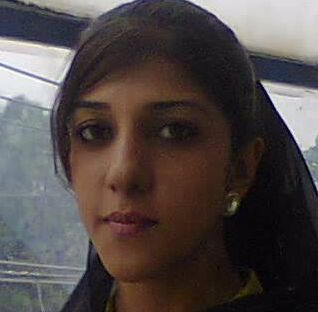Brought By Anila Bangash
Sometimes, when Nigel Plaskitt was crouched on the floor with his hand up Roy Hattersley's rear end, he would think wistfully of the Shakespearian speeches he'd envisaged performing when he began a career in acting. For Plaskitt, the force behind numerous politicians on Spitting Image as well as the PG Tips knitted monkey, never set out to be a puppeteer. "I left school to become an actor, but in my second year with a touring theatre I was asked by ATV if I could do character voices because they were casting for a new pre-school TV series, Pipkins," says the 63-year-old. "No actor ever says no to anything, so with the bravado of youth I agreed to try out."
Plaskitt's experience was limited to childhood puppet shows in his parents' living room and some holiday work experience at the Little Angel, a puppet theatre in north London. Nevertheless, ATV bosses were persuaded of his skills and he spent the next nine years voicing and manipulating a tortoise and a hare.
Creating a rounded personality with merely a voice and a hand is a challenge beyond many seasoned actors, especially when hunched under a table out of sight. "When actors act a scene they can look at their fellow performers and take their cues from them. But you can't see where puppets are looking so you had to look at a TV monitor which showed us what the camera was seeing so that we got the sightlines right," he says. "We'd be sat under a bench on the floor wearing a huge mike like a necklace and looking sideways at the screen while operating the puppets above our heads," he says. "It was a steep learning curve – in the first episode you can see my head."
Extreme discomfort and anonymity are the chief challenges faced by puppeteers. Plaskitt came to appreciate the latter after a brief taste of celebrity. "In between filming Pipkins I did acting jobs, including a commercial for Vicks nasal spray, which got the craving for fame out of my system," he says. "People kept coming up to me in the street – even once in San Francisco – and I knew I couldn't cope with that all of the time."
While the puppets that he voiced and vitalised became household names, Plaskitt, crouched beneath them, was unrecognisable and unsung. But it was the crouching, not the invisibility that bothered him. "The uncomfortable positions are the worst aspect of the job," he says. "In one Spitting Image episode the politician's heads were in a vat of 'sewage' and we were underneath and the stuff kept dripping onto us. And operating Roy Hattersley was unpleasant as his spit would run down my arms when the spray pump inside the puppet leaked."
When Pipkins ended in 1981 Plaskitt needed a break from puppets. He became a producer and director, advising on the creation of Brookside, but then he was approached to help with the second series of Spitting Image. "There were eight of us operating the puppets to a pre-recorded track because the puppets were so heavy we'd be too breathless to do the lines," he says. "Arnold Schwarzenegger was a particularly huge puppet and once we noticed that he seemed to be dropping off during a scene. It turned out the actor inside him was passing out."
With two people to a puppet, synchronised co-ordination was a new challenge. "You'd have somebody doing the head and the left hand and somebody doing the right hand and the latter would inevitably feel underused so in the early episodes you'd see the right hand suddenly taking on a life of its own," he says. "You had to learn to mimic what the left hand was doing to keep the movement natural."
Plaskitt remained with Spitting Image for 13 years. He says John Major was one of his favourite puppets "because he did so little it was a challenge to give him character". During that time that he was recruited by the Jim Henson Company to work on two Muppet movies. When the firm was approached by ITV Digital to dream up a character to promote its name change, Plaskitt began his long association with the knitted sock monkey adopted by PG Tips. It's a job that involves unnerving intimacy with a female colleague. "She does the arms while I do the head and body so we are bunched together and she has to read my mind and fit in round me when I move – often in the most awkward positions," he says. "One PG Tips advert had Monkey dancing through Marylebone station and I was lying on the platform with bemused commuters stepping round me. You learn to forget any dignity in puppeteering."
A background in acting is essential for a career in puppets, says Plaskitt, who trained at Lamda after leaving school. Similarly vital is patience, co-operation and a repressible ego. "People don't appreciate the job because they never see the performer and don't think about the skill and effort and the sheer technical challenges," he says. "Above all, filming with puppets can be very boring with two or three shots in a day and hours of waiting around."
Compensations are the close bonds formed by puppeteers during long runs and the inevitable humour. "I've had the usual disasters of eyes popping off new puppets on camera and walking them into doors because the set was above my head," Plaskitt says. "But my favourite memory was Dr Dolittle when Phillip Schofield had to gaze into the eyes of a seal and sing it a love song. The puppet had eyes that blinked electronically and one suddenly got stuck open so the seal started to wink at him and Phillip had to finish his song while struggling to keep a straight face."
Anna Tims - The Guardian

.png)



0 comments:
Post a Comment
Grace A Comment!